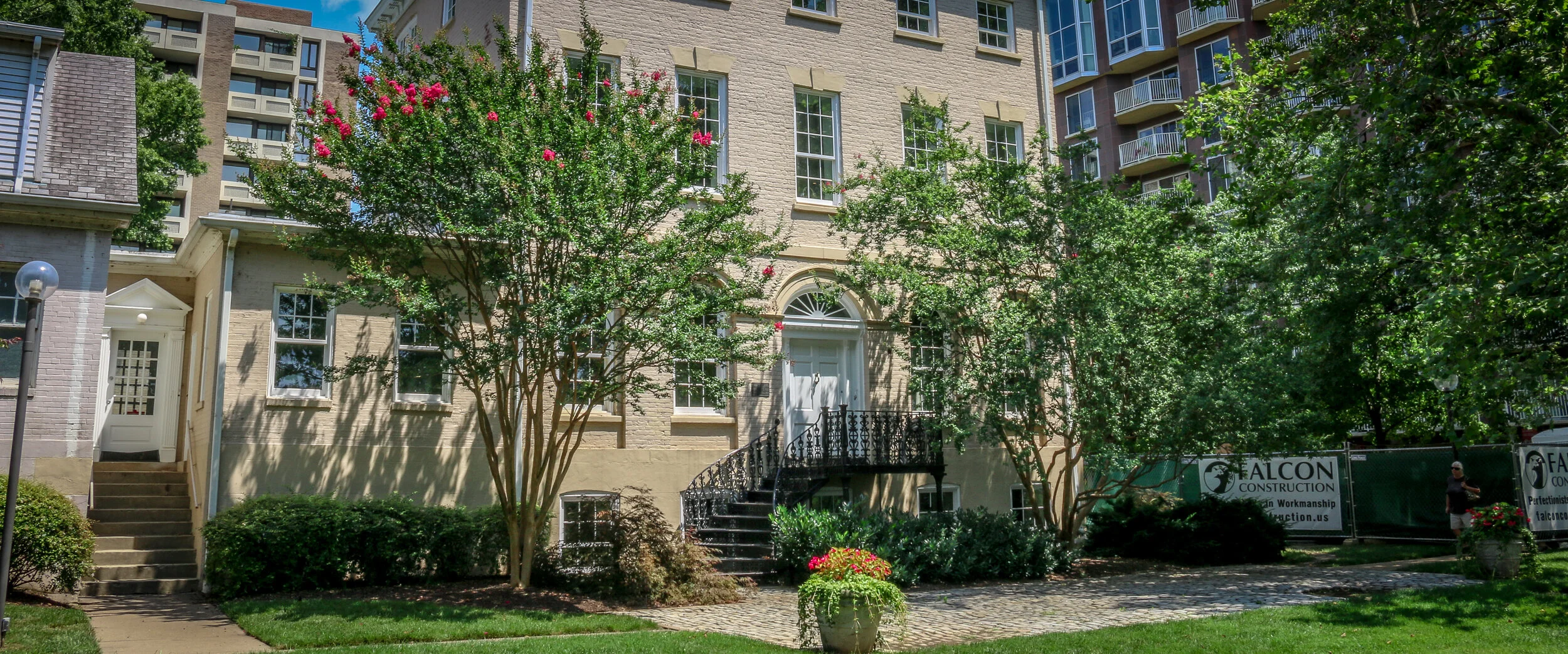The Thomas Law House was built between 1794 and 1796. It was designed by architect William Lovering who is credited with the design of several other properties which will be featured later in this series including The Octagon House, Wheat Row and the Duncanson-Cranch House. Thomas Law, formerly of the British East India Company, had recently immigrated to the United States with two of his three illegitimate sons born from his Indian mistress. He traveled across the Atlantic with his friend and business associate Captain William Mayne Duncanson who would build a house around the corner which will be featured next in this series. Thomas Law met and married Elizabeth Parke Custis, who was twenty years his junior, in 1796 and the couple moved into this newly built home which was then dubbed “Honeymoon House”. Elizabeth Parke Custis was the eldest granddaughter of Martha Washington from her first marriage. Elizabeth’s brother was George Washington Parke Custis, the builder of Arlington House (the Custis-Lee Mansion) and the father of Mary Anne Randolph Custis who would marry Robert E. Lee. Thomas and Elizabeth would live in this beautiful Federal Style home for only about five months before moving to a new home which was then under construction. They would divorce in 1811.
From 1814-1827, this house was occupied by Richard Bland Lee, brother of Henry “Lighthorse Harry” Lee and uncle of Robert E. Lee. Richard was the second cousin of Thomas Sim Lee, whose winter house in Georgetown was featured earlier in this series. Richard had served as a U.S. Representative from Virginia in the very first session of congress and had helped negotiate the Compromise of 1890 which established the Capital City of Washington D.C. He served three terms in congress and then returned to his family’s tobacco plantation – Sully – in Chantilly, Virginia. Financial hardships in the family eventually forced the sale of Sully after which Richard and his wife moved to the Thomas Law House. Richard would serve under President James Madison as a commissioner charged with helping rebuild the city after the War of 1812 and would later be appointed as a judge by James Monroe. He lived in this home until his death in 1827.
The Thomas Law House would become the Mount Vernon Hotel during the Civil War. It stood opposite the 6th Street Wharf and would have born witness to so many soldiers coming and going during those years. Abraham Lincoln himself came to the wharf to greet soldiers rushed north to defend the city in the battle of Fort Stevens (which I wrote about last month - read that story HERE). The print pictured here shows the house as the Mount Vernon Hotel in the background with the American flag raised high (and an incomplete Washington Monument on the left).
In 1913 the house became the Washington Sanitarium’s Mission Hospital caring for the city’s poor residents. A decade later, Dr. Henry G. Hadley purchased the house where he lived and ran his own clinic before opening Hadley Memorial Hospital in Anacostia. With the urban renewal of SW during the 1960s, the house was turned into a community center for the Tiber Island Cooperative. It was recently purchased for $2.4 million and is being converted back into a private home. .
The Thomas Law House is located at 1252 6th St. SW and is currently closed to the public and under renovation.
D.C.’s Oldest Homes was intended to be a single post with an overview of the history of some of the beautiful buildings from the city’s first decade and before. The more I looked at the history of each property though, the further down the rabbit hole I went. I hope you enjoy this series of brief posts looking at each property individually. All photos are available for sale and licensing

